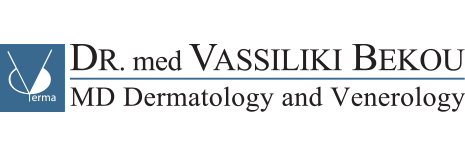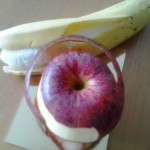( For the texts and pictures books, publications, guidelines for example in awmf.org and contributions of colleagues were consulted.)

Collage of female portraits. Healthy faces of young women. Spa, face lifting, plastic surgery collage concept.
Wrinkle correction with peels
Mechanical or chemical peels are suitable for the correction of fine wrinkles and scars (acne scars) in the facial area. We offer superficial, medium and deep exfoliation with fruit acids, trichloroacetic acid, salicylic acid etc. and phenol. The medium-depth peels are most suitable for wrinkle treatment.
A very superficial peel (eg fruit acid peel, penetration depth 0.06 mm) reduces the liability of the skin cells in the epidermis and can work up to the top dermis. Medium depth peels, (depth 0.45 mm) act in the middle layers of the dermis. Deep peels (phenol peel, penetration depth 0.6 mm) act in the deeper layers of the dermis.
#######
1 light peels for example fruit acid-salicylic acid
Light peels are particularly suitable for the treatment of active acne, highly porous skin and photodamaged skin with keratinization disorders. Dark spots are lightened, light wrinkles and scars are reduced. The skin is smoother and softer, yellowish aspect of the age of the skin becomes brighter and appears bright. The moisture retention of the skin is increased. Acne-like skin blemishes are improved.
Occasionally there may be an increased local redness and dryness of the facial skin for several days. Important is the daily application of a high sun protection during the treatment period, as this can lead to unwanted pigmentation under UV exposure.
The substances most commonly used for superficial peels are alpha hydroxy acids (English: AHA = Alphahydroxyacids).
Alpha hydroxy acids are naturally occurring fruit acids. These include the glycol, the milk, the lemon, the apple, the almond and the tartaric acid.
The alpha hydroxy acid glycolic acid is the most simple and is suitable for easy peeling treatment in which the upper layers of the epidermis to be removed. This scrub solutions are applied in increasing concentrations. A light peel can be repeated every 2-3 weeks. It is advisable to make a series of 4-8 treatment sessions, since the effect is increased by the multiple use. Studies show that repeated peeling lead to a normalization of the stratum corneum of the skin and build up the fiber structure of the skin (connective tissue) by increasing collagen synthesis.
Peels with salicylic acid
Salicylic acid is called a beta-hydroxyacid (BHA). It is in contrast to the fruit acids fat soluble and can therefore penetrate into the sebaceous follicle. She wears the horny layer of the skin layer by layer from the outside from inside. In combination with the AHA peel effect is increased. The salicylic acid is particularly suitable for the treatment of acne. The side effects are similar to that of AHA peels.
#######
2 medium-depth peels for example trichloroacetic
The substance most commonly used for medium depth peeling is the trichloroacetic acid (TCA). Medium depth peels act to the upper reticular dermis (epidermis and upper layers of the dermis) and cause a synthesis of collagen. Fine lines (eg at the upper lip, crow’s feet), dark spots, superficial scars, certain chronic sun damage to the skin can be treated with TCA. Usually it takes 2-4 sessions until the desired result is achieved – depending on the thickness of the concentration of TCA.
After degreasing with acetone, the peeling substance is evenly applied with cotton swabs or carriers in several layers, until a uniform white color (“frost”) occurs. When applying the exfoliating substance a strong burning sensation occurs for 1-2 minutes. Moist saline envelopes are then placed for 10 minutes. After completion, a fatty peel care ointment is applied. The white frost will be replaced after a few minutes by redness and swelling, which has its peak after 48 hours. Brownish crusts appear between the 7th and 12th day with completely exfoliation. Please put twice the day half an hour wet saline envelopes on your face. Please use then 3 times daily for 15 days and then the healing ointment cream on. Please avoid any sunlight for 6 weeks, followed by exposure to the sun with a sun blocker. Please start 4 weeks after peeling treatment with the hydroquinone-tretinoin containing postpeel lotion.
#######
3 deep peels example phenol
After thorough cleaning with a degreasing solution like acetone and a syndet the peeling solution is rubbed into several layers with a thin cotton swab under strong pressure until a gray – white frost occurs.
Wound cleaning is subsequently carried out in the office (wound treatment with saline). Then, antibacterial ointments and creams are applied. The complete healing of the epidermis is usually up to the 10th – 14th day. The skin is then flushed, up to 12 weeks more or less. The redness can be covered with makeup.
Please put twice the day half an hour wet saline envelopes on your face. Please use then 3 times daily for 15 days and then the healing ointment cream on. Please avoid any sunlight for 6 weeks, followed by exposure to the sun with a sun blocker. Before and after treatment with the hydroquinone-tretinoin containing postpeel lotion.
Phenol is excreted via the liver and kidneys. In large-scale treatment can phenol induce side effects on the heart muscle have (arrhythmias). Therefore, liver and kidney function should be determined before a large-scale exfoliation treatment. The large self- treatment is performed under ECG monitoring in anesthesia or sedative and pain killer administration. Small -scale areas can be performed under local anesthesia without ECG monitoring.
For whom is a chemical peel ?
1 for superficial peels
Patients with melasma and other pigmentation of the skin
For general skin rejuvenation and as an anti-aging therapy
For acne and acne scars
For dark spots, age spots
For light wrinkles
Suitable for all skin types and all year feasible, but mainly during times of poor sun.
#######
2 for medium-depth peels
superficial wrinkles
hyperpigmentation
papulopustular acne
acne scars
#######
3 for deep peels
deep wrinkles
deep acne scars
Precautions
To avoid long lasting redness or pigmentation, the skin must be pretreated before each peeling treatment.
1 For the superficial exfoliation treatment, use 2 x daily for 2-4 weeks a fruit acid preparation.
2 In medium-depth peels the skin is already prepared for 4 weeks with a hydroquinone – tretinoin containing preparation. This leads to a shortening of the healing rate and prevents hyperpigmentation after the peeling. In addition, prophylaxis against herpes (2 days before the beginning, up to 3 days after the peel) and any antibiotic prophylaxis (from the first peeling day for 5 days).
3 With deep peels it has been proven to perform an injection of Botulinum toxin 2 to 4 weeks before the peeling session, as this immobilized the muscles of facial expression and does not wrap the skin in the healing phase, back into a pattern of folds. The same pre-treatment as in the medium depth peels is is recommended.
Treatment –
Regular performance every 2-4 days in the office
Side effects
1 redness, swelling, oozing, crusting: Stepping on a regular basis, persistent redness.
Sometimes the redness can persist for longer than 12 weeks. Here special creams should be used.
2 telangiectasia: after deep peels fine veins can occur
3 hyperpigmentation: for darker skin types (skin type 3) can temporarily occur. Through
intensive pre-and post-treatment with hydroquinone- containing creams, it can be
prevented.
4 milia : sebaceous cysts by occlusion of sebaceous gland ducts
5 infections (viral / bacterial
6 scarring

